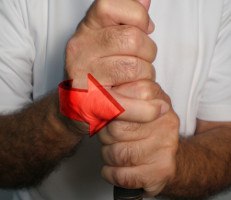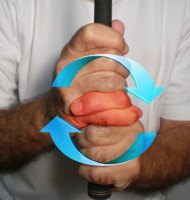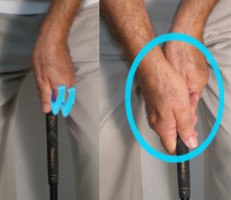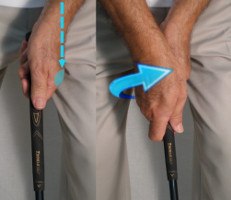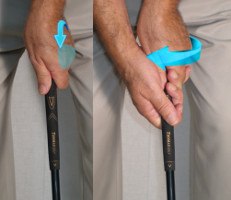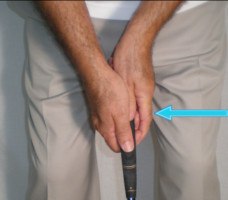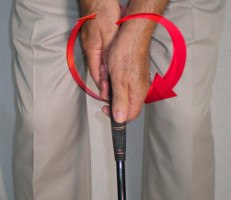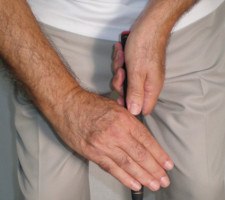Pros and Cons of Every Golf Grip Style |
Best Grip? Overlapping vs Interlocking |
Grip style: Interlocking |
Hand position: Neutral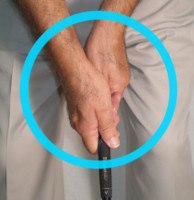 |
Putting grip style / hand position: Reverse overlap / neutral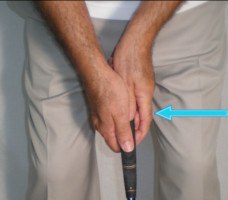
|
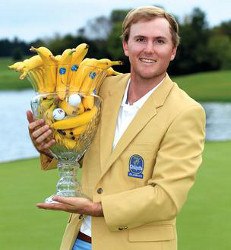
Russell Henley’s grip is designed with a primary purpose: To foster a reliable fade.
The young pro from Georgia, already a two-time PGA TOUR winner at age 25, has tweaked his grip in recent years under the tutelage of teacher Bobby Hix. A hold that once veered to the strong side is now essentially neutral, with the pad of his left thumb directly on top of the handle and the back of his glove aimed down the target line. His right hand is similarly positioned.
This neutral grip allows Henley to play left-to-right shots without having to delay his release, or intentionally “block” the shot, as the club passes through impact. Strong-grip golfers like Dustin Johnson, on the other hand, must manipulate the club to prevent major hooks.
Why would Henley want to play fades rather than draws, which produce more distance? The same reason great players from Ben Hogan to Jack Nicklaus to Tiger Woods preferred the fade – it’s much easier to control. To wit: In two seasons on tour, Henley has hit better than 63% of fairways.
The real strength of his game, though, is putting. Russell Henley’s grip helps explain why. The 6’0”, 180-pound golfer has very large hands, which he wraps lightly around a standard-size handle in reverse overlap fashion.
Henley displays an “uncocked” or “unhinged” left wrist, which minimizes wrist action during the stroke, and keeps the back of his left hand moving down the line in his follow-through – Dave Stockton style. The method works like a charm, propelling Henley into the tour’s top 30 for “strokes gained putting” in 2013 and ’14.
